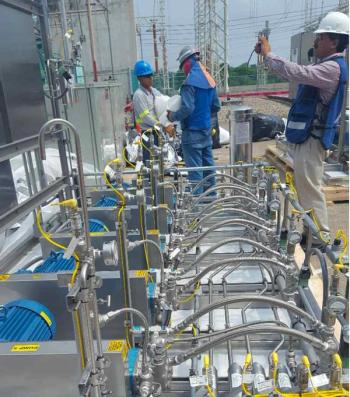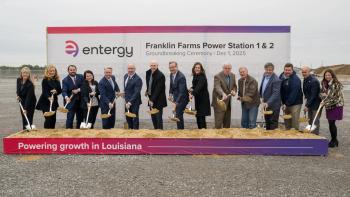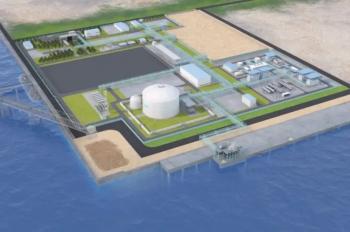
Massa and Avenza plants
Each year, GE Oil & Gas offers attendees of its Annual Meeting a tour of its Massa Machining and String Testing Facility on the west coast of Tuscany. This time, however, it added an additional element — a tour of the Avenza Module Construction Yard next door to Massa.
The basic concept of the yard is to minimize the amount of activity to be done onsite by integrating all the systems at Avenza prior to shipping. An initial 40,000 m2 at Avenza is being expanded to 140,000 m2, as well as a 25,000 m2 warehouse. It is situated 500 m from the port, which makes it more accessible to sea than Massa (Figure 1).
Massa Facility
Massa is both a manufacturing center and where GE conducts full-load testing on LNG trains. These tests ensure high reliability in the liquefaction process. The train is put under full load to verify all compressors, generators, turbines and auxiliary equipment are functioning as required. Included within the test site: A high-pressure feed system for gas mixtures; gas chromatograph for analysis; 60 Hz generator; low- and high-pressure gas coolers; and steam and lube supply.
The flow line at Massa starts with machining of components. A machining operator at the plant explained how GE makes impellers and shafts in Florence while leaving Massa to manufacture diaphragms, flanges and casings for massive compressors. Massa machines parts used to assemble GE’s BCL, MCL and PCL compressors required mainly in LNG production and pipelines. One lathe, for instance, could machine parts with a diameter of up to 8 m. The company has been investing heavily in larger machining gear due to the expansion of the LNG market.
Another impressive aspect of Massa is the reactor line. It makes huge cracking reactors for high-temperature and high-pressure duty, some up to 2,000 tons. Lead time is six months. Once the casings are machined, they have to be welded securely together. The capacity of the line is about 16 reactors per year.
Next came the packaging yard where gear such as PCL compressors are built for pipelines in places, such as Kazakhstan. To reduce the need for cranes, much of the equipment stands on movable platforms that are relatively easy to guide around the facility as they graduate along the assembly line. Some of these platforms can cope with units as heavy as 150 tons.
In the midst of the factory hubbub stood the Hands-On Training (HOT) station. Not only does HOT imply being able to use actual turbines and compressors, but it also means trainees get to start an LM2500 as part of a PGT25+ package.
Over the course of one year, the company can train more than 3,000 technicians and supervisors, who are awarded certification as equipment operators and supervisors. To earn the qualification, they have to conduct essential maintenance actions, such as borescope inspections, bleed the valves, conduct oil chip detection and perform a start up successfully.
The tour ended with a look at ongoing string tests of the one million square foot site. String testing for the Gorgon project in Australia, for example, has been taking place (Figure 2). This includes three, 5 million tons per annum trains consisting of GE Frame 7s, as well as MCL and BCL compressors. Performance and full load tests on the mixed refrigerant (MR) and propane (PR) LNG compressor trains destined for Gorgon were carried out here. While the MR train includes a Frame 7 turbine, a centrifugal compressor and a 24 MW electric motor, the PR train is composed of a Frame 7 GT plus a 63 MW propane compressor, a high-pressure (HP) MR compressor and a 24 MW electric motor. The low pressure (LP) mixed refrigerant compressor is said to have the highest worldwide power per single casing ever produced, with a rated power of more than 93 MW. During internal tests, the unit reached power output higher than 115 MW.
Newsletter
Power your knowledge with the latest in turbine technology, engineering advances, and energy solutions—subscribe to Turbomachinery International today.





